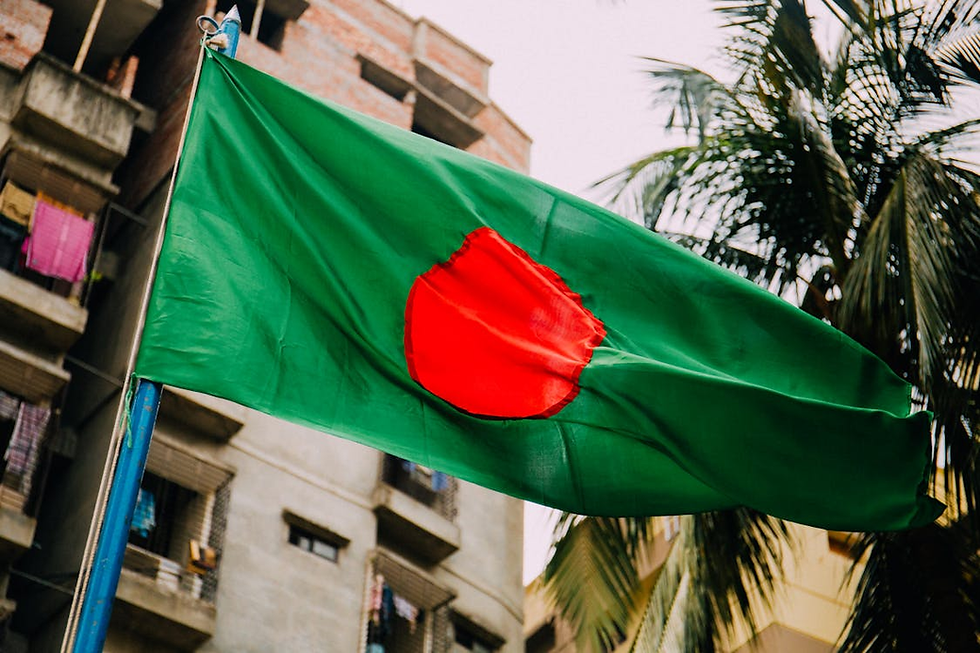18 Killed in Air India Express Crash
- Elizabeth Bratton

- Aug 9, 2020
- 3 min read
Updated: Dec 22, 2024
After 18 people were killed in an aeroplane crash on Friday, Elizabeth Bratton writes about the events that led up to the tragedy, and the conditions which contributed to it. This article describes the experiences of survivors, and how they feel the situation was handled. Some believe the pilots made serious errors, while others think they saved lives. Learn more about the investigative measures in place.
At least 18 passengers have been killed, after an Air India Express aeroplane overshot a runway in the southern Indian city of Kozhikode, Kerala State. More than 150 others were left injured, after the aircraft's nose ran into a brick wall, ultimately "pulverising" the middle of the vehicle. The disaster struck on Friday the 7th of August.
India's Civil Aviation Minister, Hardeep Singh Puri confirmed that the plane "plunged" down a 35ft slope, before breaking in two. The Boeing 737 was part of a repatriation effort for stranded Indians in the wake of COVID-19, and had departed from Dubai. Of those hurt, officials report that 156 are "seriously" so. There were 184 passengers onboard Flight IX 1134, and 149 remain hospitalised .
The tragedy occurred at 19:40 IST, as attempts were made to land amidst a thunderstorm. The "tabletop runway" at Kozhikode is known for its risks; even after circling the airport twice, the pilot was unable to land. He "apparently hit Runway 10 too late", with the wind behind him: a move the aviation authorities had advised against.
In 2011, it was concluded: “All the flights that land on Runway 10 in tailwind conditions in rain are endangering the lives of all on board." Those amongst the deceased include the two pilots. Those onboard were then hurtled down a nearby hill.
Had the plane caught fire, the death toll would probably have been far higher. However, it is thought that rain "dampened" sparks, allowing rescuers to access the plane within minutes; many had to be cut free. Fuel had reportedly leaked out of the aircraft; its non-flammability has been described as "a miracle." Some believe that, directly before landing, Captain Deepak V Sathe intentionally switched the engine off, as to prevent fire risk. If this was the case, he may have saved dozens of lives.
Passenger Renjith Panangad says everything went "blank" after landing. He remembers having "dragged" himself out of the wreckage "somehow", and is still shocked at his survival. He recalls, "The front part of the plane was gone - it was completely gone."
Renjith Panangad was returning to India for the first time in 3 years, after losing his job in Dubai. On a telephone interview, he explained: "I still can't comprehend what happened." He continued, “There was a big noise during the impact and people started screaming." Cables, seats, and luggage were scattered throughout the wreckage.
According to Arun Kumar, India's Director General of Civil Aviation, "the plane landed after crossing one third of the strip"; the runway at Kozhikode is 8500 foot long, and the pilot attempted to land beyond the 3000 foot mark. "Normally", he explains, the pilot would do another "go-around" or decide to completely abandon the landing. He concluded, "Touchdown must happen within the first 500 feet of the strip.” On Friday, India's meterological department issued a red alert for Kozhikode; earlier that day, the state was struck by a landslide that left at least 15 dead.
Communication was reportedly confusing, as the cabin crew spoke mostly in Hindi and English when making announcements. The majority of those onboard would have been from Kerala State, making their native tongue Malayalam. One passenger by the name of Riyas Madaparambathu believes that more lives would have been saved, had the notifications been understood by those onboard.
This is the worst aviation accident India has seen since the Air India Express crash of 2010. A plane from Dubai to Mangalore overshot the runway during landing, and was immediately engulfed by flames, leading to 158 deaths. Only 8 of those onboard survived. Both incidents involved Boeing 737-800 planes.
The Aircraft Accident Investigation Bureau has launched an enquiry, although it is unclear how long it will take for results to emerge. The black box has been recovered, and will reportedly be brought to Delhi for further examination by the AAIB. Air India Express are to compensate families of the dead and injured.

_edited.png)




Comments